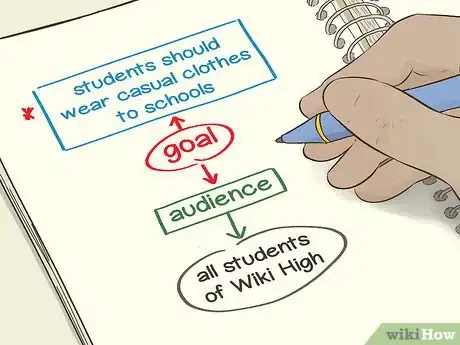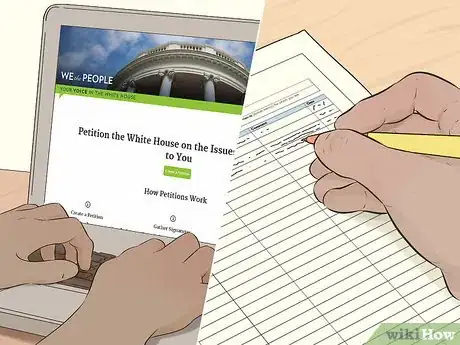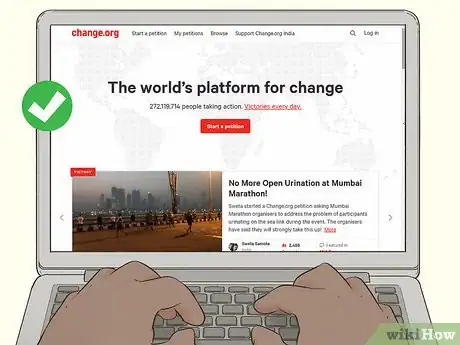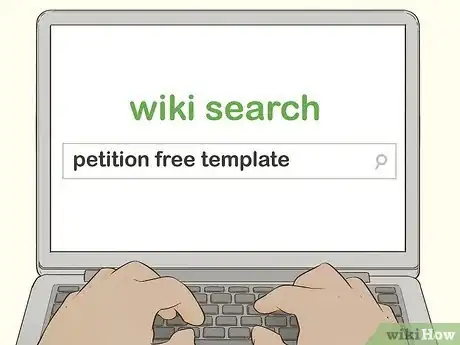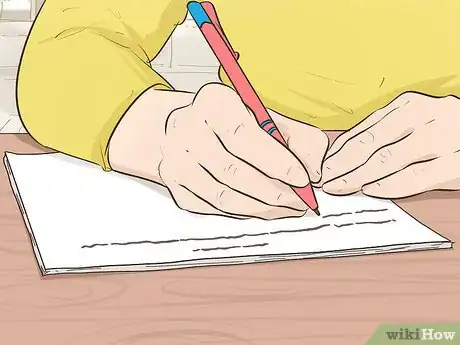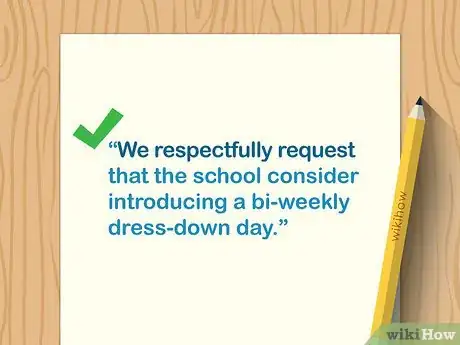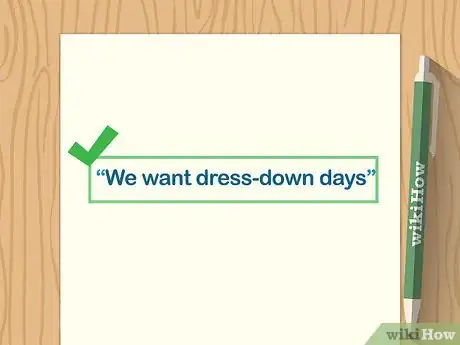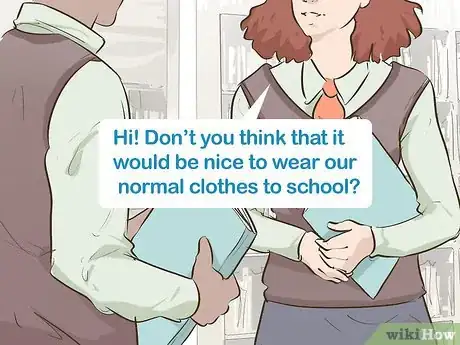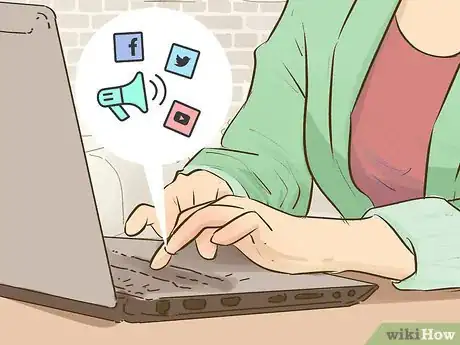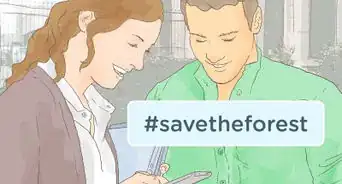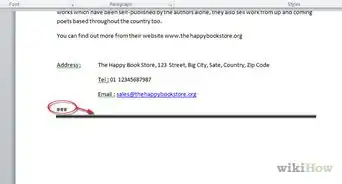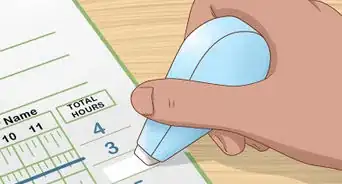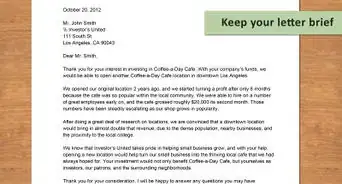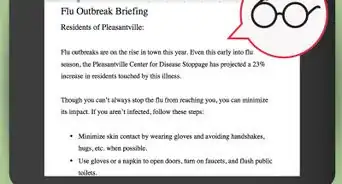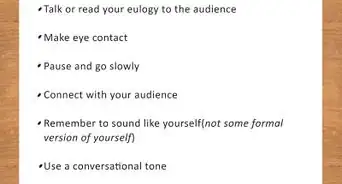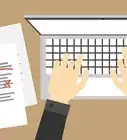This article was co-authored by wikiHow staff writer, Eric McClure. Eric McClure is an editing fellow at wikiHow where he has been editing, researching, and creating content since 2019. A former educator and poet, his work has appeared in Carcinogenic Poetry, Shot Glass Journal, Prairie Margins, and The Rusty Nail. His digital chapbook, The Internet, was also published in TL;DR Magazine. He was the winner of the Paul Carroll award for outstanding achievement in creative writing in 2014, and he was a featured reader at the Poetry Foundation’s Open Door Reading Series in 2015. Eric holds a BA in English from the University of Illinois at Chicago, and an MEd in secondary education from DePaul University.
There are 12 references cited in this article, which can be found at the bottom of the page.
This article has been viewed 28,019 times.
Learn more...
Petitions are an excellent way to create meaningful change in the world. Whether it's a complex global issue or simple local election, a petition can get your point across and produce real results. While creating a petition can often look like a daunting and overwhelming task, it's actually quite easy to start. All you have to do is choose the proper platform, write your petition, and get your audience to sign it.
Steps
Choosing a Platform
-
1Identify your goal and desired audience. Every petition has a different goal, audience, and scope of change you'd like to see. Knowing what you want to change and who you need to reach will help tremendously as you develop your petition.[1]
- A platform is the method you use to create and distribute your petition. To choose a platform, you should think about who you need to reach and what you want to change.
- Some government agencies and institutions require a certain number of signatures before they consider a petition. Make sure that you check to see what kind of platforms they allow and how many signatures you'll actually need before starting.
-
2Choose between online and printed petitions based on your specific needs. Selecting the proper platform will ensure that the right audience is seeing and signing your petition. Use a digital platform if you need to reach people from different parts of the globe. Use a template to print out physical copies if you're trying to appeal to your local community.
- It's a lot easier to get people to sign your petition if you can present it in person and explain your cause to them. Consider printing your petition and presenting it to the public yourself.
Advertisement -
3Use an online platform to create a digital petition. There are several popular websites that you can use to create a petition. Change.org, GoPetition.com, and iPetitions are simple online platforms that allow you to create and share petitions digitally. They are free to use, but tend to have limited options when it comes to designing a petition.[2]
- Digital platforms are a good idea if you plan on sharing your petition on social media or want access to an international audience.
- The federal government of the United States has a special dedicated website for political petitions, We the People. Consider using it if you want to get American politicians to change or create a law.[3]
-
4Create your own petition using a free template. There are many templates available online that allow you to produce your own petitions. Most of them are free to use, and you can modify and print them to meet your specific needs.[4]
- Templates are a good idea if you're unfamiliar with all of the traditional elements of a petition. You could forget an essential section if you've never made one on your own.
-
5Write out an original petition if your goal is simple and your audience is small. Take a piece of paper and write out what you want to change in a few sentences at the top. Then, create a column for people to sign their name, and another column for people to print their name. Approach your audience directly and ask them to sign it!
- If you're trying to get your school to change something, this can be an effective way to show them that the students support your idea.
Writing Your Petition
-
1Address your audience as you start to write. Think about who you're trying to appeal to and use language that fits that audience. If you're trying to appeal to the audience's emotions, try using powerful and sensory language with a lot of strong verbs and adjectives. If you're trying to appeal to an analytical or legislative audience, try relying on logic and simple language.[5]
- For example, if you're a high school student trying to petition your school to allow dress-down days, you may say, “We have been forced to wear these stiff and uncomfortable uniforms for too long!”
- A petition designed to garner support for a local mayoral candidate may start off with a more logical approach. For example, you might start, “Our next mayor should be reasonable, respectful, and honest, don't you think?”
-
2Choose your tone carefully to get the best results. If your petition calls for a change that you think needs to happen immediately, feel free to use a stronger tone. But be careful when making demands. Your audience may be more likely to hear you out if you're using positive language and simply making a polite request in your petition.[6]
- Don't exaggerate or lie. Your audience will not take your petition seriously if you appear to be untrustworthy.
- If the high school student that wants dress-down days starts to use demanding language, the administration is unlikely to respect the request. Instead, they might say, “We respectfully request that the school consider introducing a bi-weekly dress-down day.”
- A petition designed to get a mayoral candidate elected would likely be better off appealing to a sense of urgency. For example, you could say, “This city deserves the best. The time to act is now!”
-
3Keep it short and get right to the point. Many readers will only look at the first couple of sentences before making up their mind about how they feel.[7] A good petition gets right to the point and lets the audience know why the topic is important.
- The entire body of your petition should be under a paragraph or two.
- Put your proposed solution in the headline of your petition. This will give the audience the greatest sense of urgency and let them know what the petition is about as soon as they start to read it.[8]
- If a high school student wants dress-down days, the headline should indicate that. A simple phrase like, “We want dress-down days” or “Elect Mayor Smith” is an essential key in getting your audience to understand your petition.
-
4Proofread your writing to make sure that it's ready to go. You should proofread your petition to make sure that the argument makes sense and that your work is free of errors. Try reading your work out loud to see how it sounds. Consider having a friend or colleague proofread it as well to see if there's anything that you may have missed.[9]
- Don't rely entirely on spellcheck. Digital spellcheckers often miss nuanced or complex mistakes, and you want your writing to be as clean as possible.[10]
Gathering Signatures and Support
-
1Develop a short and simple pitch. A good pitch is simple and friendly, but invites people to care about your cause. To develop a pitch, think about how you could motivate someone to stop and talk to you. Your pitch should be your main goal, stated in under three sentences. Always start by saying hello.[11]
- A good pitch for a high school student's dress-down petition may be, “Hi! Don't you think that it would be nice to wear our normal clothes to school?”
- A pitch designed to get a new mayor elected might sound a little different. For example, “Hello! Care to sign a petition to make our government stronger?”
-
2Share with your friends and family to generate initial support. People that know you personally will be the most likely to hear you out at first. Asking friends and family to sign your petition is an excellent way to start off and get your first set of signatures![12]
- Feel free to be straightforward with people that know you intimately. Simply explain the importance of the issue and ask them to sign it for you.
- If your petition is rooted in a local cause, the support of your family can demonstrate the importance of an issue to a smaller community.
-
3Encourage people to sign your petition by engaging with them. Express the importance of the signer's participation by engaging with them on a personal level. People will be more likely to join your cause if they feel like you're personally invested in their opinion. Hear them out, answer their questions, and encourage them to come to community events.[13]
- To make people feel heard, use affirmative language like “I totally agree with you,” or “I hear you!” This will make your audience feel like they're on your side, and they'll be more inclined to sign your petition.
- Protests and rallies are good places to get your petition signed. The people attending are more likely to want to create change and engage in difficult issues.[14]
-
4Promote your petition to get a wider audience. Sharing your petition on social media can be a great way to get more people to look at it and consider signing it. You can also ask others to share it on their social media accounts to generate a massive audience for your petition.[15] If you're petitioning people in person, consider finding a high-traffic area, like a busy intersection or outside of a local store.[16]
- Look for Twitter hashtags related to your cause and use them to promote your petition.[17]
- Join Facebook groups that would be likely to support your petition and share it with them.[18]
- Check local laws to make sure that it's legal to petition at a certain establishment or in a particular area.
- If you're petitioning people at school, consider doing it at lunch when you have the opportunity to address larger groups of students.
References
- ↑ https://guide.change.org/create
- ↑ https://guide.change.org/create
- ↑ https://petitions.whitehouse.gov/
- ↑ https://www.resourcecentre.org.uk/information/organising-a-petition/
- ↑ https://constitutioncenter.org/media/files/CK-Lesson_3-_Worksheets_-_Writing_a_Petition_Activity.pdf
- ↑ https://sacd.sdsu.edu/student-ombudsman/writing-an-effective-appeal-or-request-letter
- ↑ https://writingcenter.unc.edu/tips-and-tools/audience/
- ↑ https://guide.change.org/create#writeheadline
- ↑ https://writingcenter.unc.edu/tips-and-tools/editing-and-proofreading/
- ↑ https://writingcenter.unc.edu/tips-and-tools/editing-and-proofreading/
- ↑ https://ctb.ku.edu/en/table-of-contents/advocacy/direct-action/petition-drive/main
- ↑ http://guide.change.org/share
- ↑ https://petitions.moveon.org/howto_campaign.html
- ↑ https://petitions.moveon.org/howto_campaign.html
- ↑ http://guide.change.org/share
- ↑ https://www.pan-uk.org/site/wp-content/uploads/How-to-grow-a-petition.pdf
- ↑ http://guide.change.org/share
- ↑ http://guide.change.org/share
